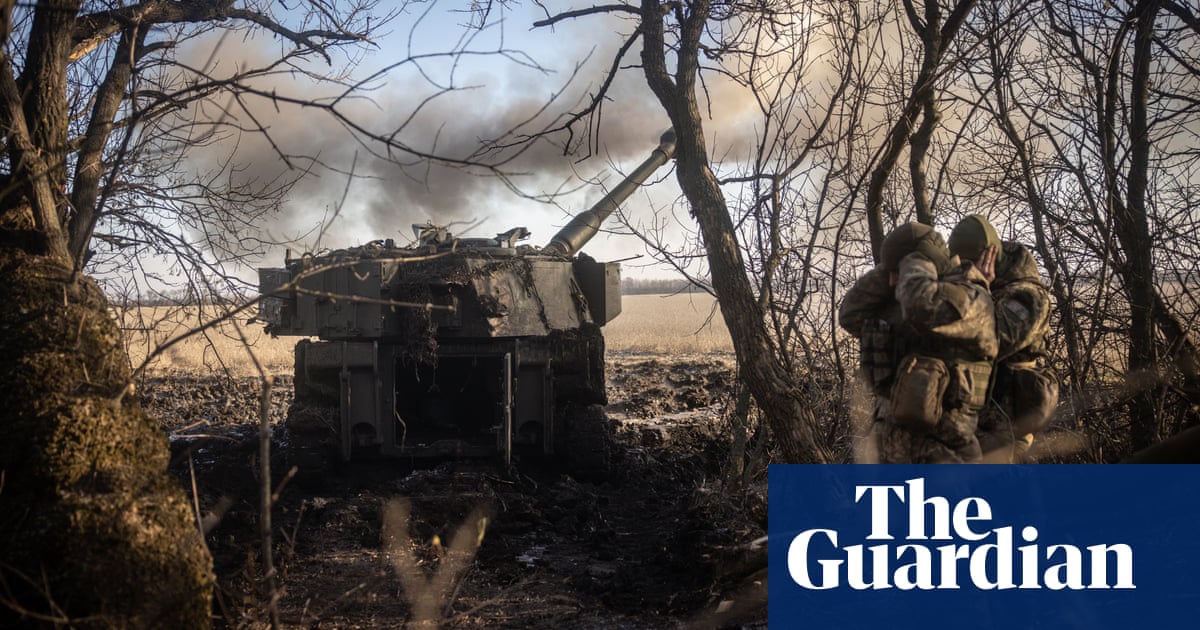
Ukraine’s war reaches the one-year mark with no immediate end in sight. Both sides want to carry on fighting, and any negotiated peace looks a long way off. So how might the war end? Here are five scenarios to consider.
Russian offensive succeeds
Russia achieves a breakthrough in the east either very soon, before Ukraine gets its western weaponry in place in a few weeks, or after a Ukrainian counteroffensive fails. The invaders’ key advantage is the number of troops available – about 300,000, almost all of whom are already committed to Ukraine.
Some Ukrainian experts fear a pincer movement to encircle Donbas and the east from Sumy in the north and Velyka Novosilka in the south, allowing Russia to occupy most of the four Ukrainian provinces it has unilaterally claimed to have annexed. At this point, Russia could call for a ceasefire to retain what it has, and run a defensive campaign to consolidate its battered military.
However, it is hard to imagine Russia striking very far west, given the painfully slow advance around Bakhmut and the catastrophic attempt to capture Vuhledar. Currently, western intelligence estimates Russia is taking 1,000 casualties a day. There remains speculation that the Kremlin will seek a fresh mobilisation, and another worry is that Beijing may start covertly supplying Russia.
Ukraine breaks through
Ukraine is assembling a force of more than 100 western Leopard 1 and 2 tanks, plus others, and a similar number of armoured vehicles that it hopes to use whenever the spring muddy season eases, to smash through Russia’s defensive lines in a D-day offensive.
The obvious strategy is to try to break the road and rail corridor linking Russia proper to occupied Crimea, so cutting off the peninsula from its hinterland, with an attack towards Melitopol or Berdansk. Combine that with another attack on the now repaired 12-mile (19km) Kerch Bridge to the Russian mainland and Crimea would be increasingly isolated and vulnerable.
The hope is that such a display of military strength might then force Russia to the negotiating table, but Vladimir Putin’s bellicose speech this week hardly suggests a leader willing to compromise soon. In reality, if Ukraine is going to force Russia from all its occupied territory, it is likely to take several more offensives, many months at least, and a dramatic change in Kremlin thinking.
The worry is that even this is overly optimistic, although it is the strategy that western leaders appears to be selling to their publics. “There is a real problem here in that we may be over-encouraged by Ukraine’s early successes in counterattacking last year,” said James Nixey, a Russia expert at the Chatham House thinktank.
Stalemate
Ukraine’s much-anticipated spring counteroffensive makes incremental or even no progress in the spring and summer, partly because the west has failed to supply it with enough weaponry. The result is a protracted struggle that gradually lessens in intensity as the Russians run short on ammunition and resupply to Ukraine eases.
Pressure would then grow on Kyiv to negotiate – not necessarily from the west, but perhaps led by China. However, Ukraine would be highly unlikely to formally cede any territory, given popular support for resistance to the Russian invasion.
So a more likely end point here is not a negotiated peace, but rather a conflict that consolidates around lines of control. “You end up with something between a frozen conflict and an everlasting war, in which neither side has the energy or economy to win,” Nixey said.
This would bear similarities to the situation after the initial Russian incursions into Ukraine in 2014 – but this time the west would be left facing an implacable, large hostile actor in Moscow. Ukraine, meanwhile, would need years of western support to ensure its eastern border remains stable.
Western exhaustion
Russia hopes it can embroil the west in a long proxy war that will exhaust countries first militarily and then politically. That would mirror what happened in Afghanistan when, after 20 years, the US withdrew, handing it back to the Taliban.
So far, western countries have shown strong unity in wanting to help Ukraine force out Russia. But if Joe Biden is defeated in the US presidential election in 2024 by Donald Trump or another isolationist candidate, it could pose serious questions for Ukraine’s war effort. The US has provided €44bn ($46bn) of military support to Ukraine, and Europe (including the UK) €18.7bn, according to Germany’s Kiel Institute.
“It was undeniably brave of Biden, an 80-year-old, to visit Kyiv, but I’m not convinced that he sees Ukraine as an election-winning issue either,” Nixey said.
Leadership change
Wars often do not end predictably, and a failure to achieve hoped-for victories often leads to a sudden change of government. Ukraine appears very dependent on Volodymyr Zelenskiy in terms of its public diplomacy, but he does not direct its military strategy in detail and the country’s desire to fight runs very deep.
As for Russia, Nixey said: “Putin is probably in the riskiest position he has ever been,” but added that the president’s grip on the Kremlin and the country nonetheless appeared to remain strong. Even if Putin were unexpectedly ousted, it is far from obvious that any successor would want to withdraw from Ukraine.
Even so, the longer the Ukraine war runs inconclusively, the more likely it is that something unexpected will occur – on either side.
"lose" - Google News
February 24, 2023 at 08:13PM
https://ift.tt/cS0U4jk
Win, lose, stalemate or a shock: how might the Ukraine war end? - The Guardian
"lose" - Google News
https://ift.tt/9pTwKaz https://ift.tt/B7CEmGk
Bagikan Berita Ini














0 Response to "Win, lose, stalemate or a shock: how might the Ukraine war end? - The Guardian"
Post a Comment